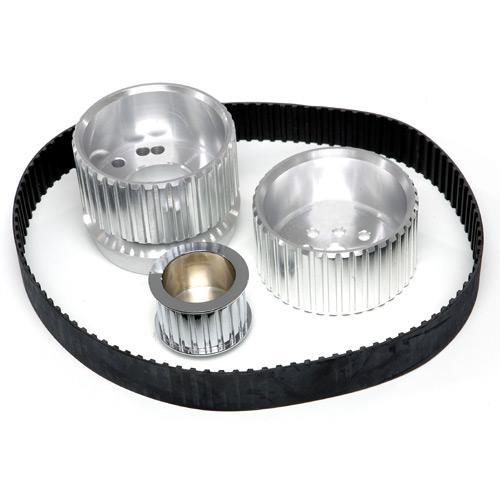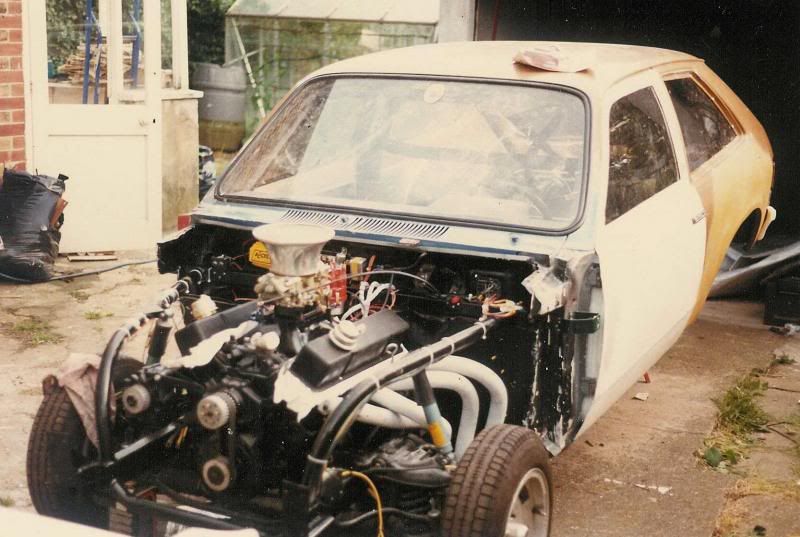Some additional considerations:
1) Gilmer belt drives are INCREDIBLY noisy in a mid-engined car. Hall Pantera used to sell a setup for Pantera use, and it was popular among people who drove just a few miles to the car show and wanted to impress their friends with the sound as they pulled into the lot. But almost every one I know of has since been removed because they are just too aggravating to live with in the long term.
2) They offer zero advantages over conventional V-belts for simple water pump/alternator applications, and lots of disadvantages, not the least of which is their much greater size. You won't fit one in a GT40 without extensive modifications to the engine access panel, and now you've got this protrusion into the cabin and the belt is screaming in your ear.
3) Because the belts are toothed, they don't need an enormous amount of tension, certainly less than conventional V-belts do. A friend was driving his Gilmer-equipped Pantera from Las Vegas to the San Francisco area, alone, at night, when one of his machined aluminum pulleys simply disintegrated, because he had too much tension on the system. In the course of falling apart, it also demolished the belt, and he was way, WAY stranded. I think he had to get a new pulley and belt overnight-shipped from Hall Pantera, but I wouldn't count on the ability to get replacement parts that quickly today.
Bottom line--just say no! There are plenty of other places where you can waste money more effectively on a GT40. :laugh:



